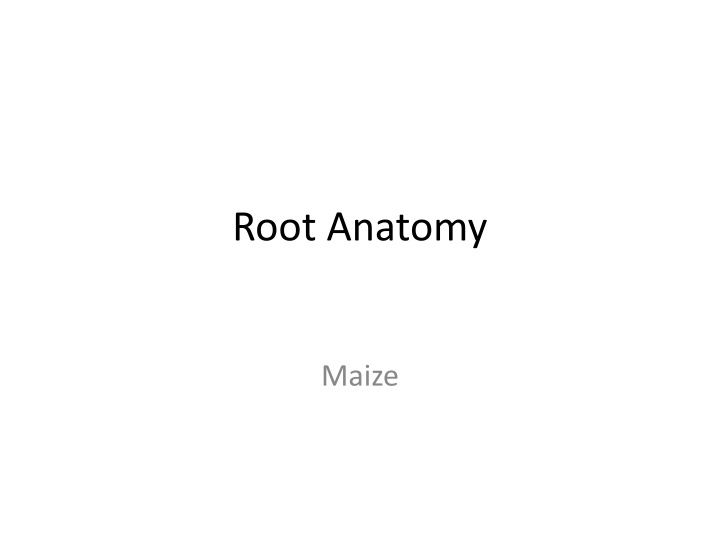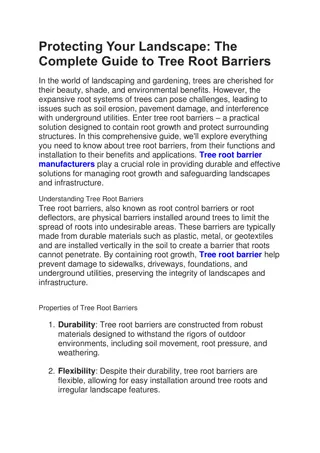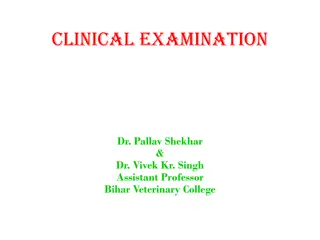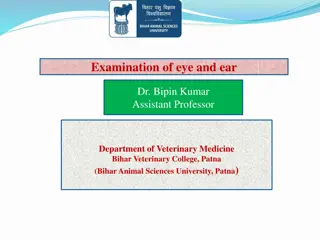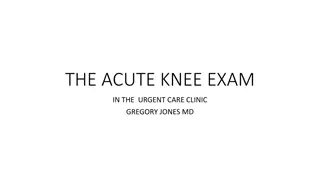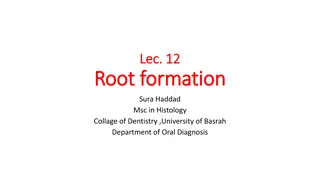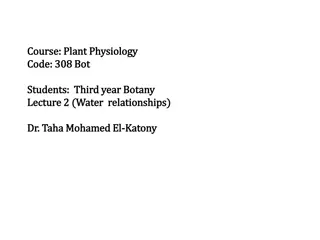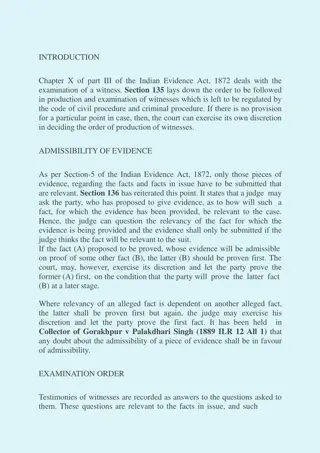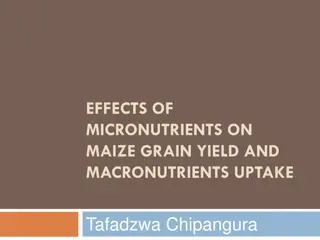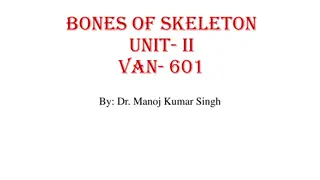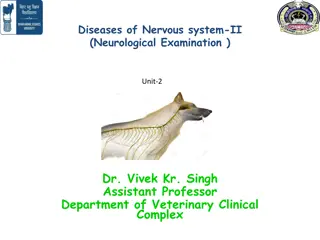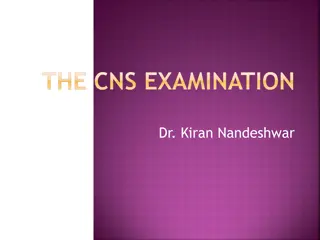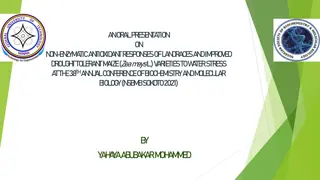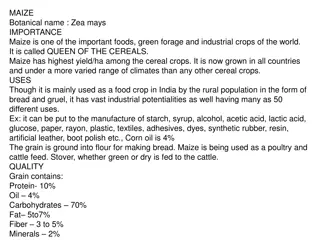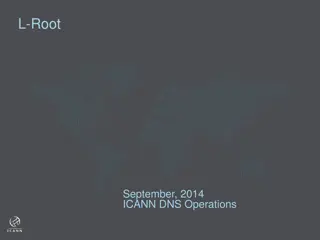Maize Root Anatomy: An In-depth Examination
Maize root anatomy involves various specialized structures such as the epidermis, cortex, endodermis, pericycle, and vascular tissue. The epidermis is crucial for absorption and protection, while the cortex plays a role in providing support and storage. The endodermis acts as a barrier and regulates nutrient uptake. The pericycle facilitates lateral root formation, and the vascular tissue contains xylem and phloem for conduction. Understanding the intricacies of maize root anatomy is essential for comprehending its functions and adaptations.
Download Presentation

Please find below an Image/Link to download the presentation.
The content on the website is provided AS IS for your information and personal use only. It may not be sold, licensed, or shared on other websites without obtaining consent from the author.If you encounter any issues during the download, it is possible that the publisher has removed the file from their server.
You are allowed to download the files provided on this website for personal or commercial use, subject to the condition that they are used lawfully. All files are the property of their respective owners.
The content on the website is provided AS IS for your information and personal use only. It may not be sold, licensed, or shared on other websites without obtaining consent from the author.
E N D
Presentation Transcript
Root Anatomy Maize
Root Underground part of plant axis developed from radical. It is concerned with anchorage, absorption and conduction. It also serves as storage organ e.g. carrot, radish, sweet potato, etc.
Monocot root anatomical character Xylem and phloem strands are more than six i.e. polyarch condition, metaxylam vessels are large and circular in outline. Pericycle is made up of thin walled cells and give rise to lateral roots. Casparian strips are present on radial and inner walls of endodermal cells except the passage cells. There is no secondary growth hence cambium absent. pith is large, well developed and is either parenchymatus or sclerenchymatus.
Maize root anatomy Epidermis/ epiblema: It consist of single layer of thin walled cells. Cells are tightly joined with each other and most of them have tubular outgrowths called root hairs. It has role in absorption of water and minarals and protection of internal tissue.
Cortex- 1. Exodermis Multilayered protective tissue present beneath epidermis. The cells may have casparian bands or may have thickening of suberin on their walls. Exodermis may have one kind of cells or short and long cells. During young condition wall of short celldo not contain suberin, on maturity they become suberised.
Cortex-2. parenchymatus zone This region is massive and contain small polygonal and large spherical parenchyma cells. The cells are thin walled and contain well developed intercellular spaces. 3. Endodermis: It is single cell thick, innermost layer of cortex. Consist of barrel or drum shaped cells. The cells contain thickening on there inner and radial wall called casparian band/strips. Some endodermal cells are thin walled and known as passage cells, are present opposite to protoxylem.
Pericycle It is single cell thick layer present below epidermis. It is consists of thin walled compactly arranged cells. It is capable of giving rise to lateral roots.
Vascular tissue Xylem and phloem strands are many (i.e. polyarch) and arranged separately on different radii (i.e. radial) alternating with each other. The xylem contain large metaxylem vessel towards center and small protoxylem element towards peripheral side(i.e. exarch). The phloem strands are very small as compared to xylem. The xylem and phloem strands are separated from each other by parenchyma cells called conjunctive tissue.
Pith It is well developed and large in maize root. It occupies central portion of root axis. It is made up of thin walled parenchyma cells with intercellular spaces.
